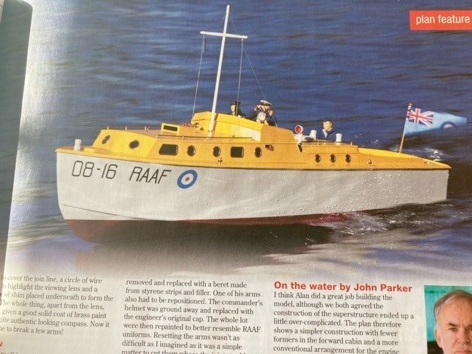2022
Build Feature :Amphibious Truck
by Sam Keirs

The Halvorsen Boats business was founded in 1887 and continues today. They build fine boats in a classic style, typically with gorgous wooden decks and lovely fittings. They have a large fan base and many enthusiastic owners of both new and restored classic boats.
During WWII, Halvorsen built 250 boats for the armed forces of America, Australia and The Netherlands, including a batch of 38 foot seaplane tender / rescue boats, at the Ryde shipyard pictured above. Build instructions for a model of this boat appeared in Model Boats October 2012 issue.
Sam took inspiration from that article, and used the plans available from Sarik Models as the basis of his build.


Construction is based on a set of lite plywood formers joined by a keel and stringers. Sam used a set of locating batons screwed to a base board to locate and support the formers. This was relatively straightforward, and careful inspection shows that the deck stringer (nearest the base board) is held above the base board at some points, to form the curvature of the deck, by extra material on the formers. That extra material is easily cut away one the glue has set, leaving the stringer running along the underside of the deck.
The hull was covered in lite ply sheets, before planking was laid on the surface. Although the planking will not be a visible feature of the finished model, it provides additional strength to the hull, and is more easily sanded, to finesse the shape. Quick drying filler was used in areas with compound curves or where it would be difficult or time consuming to fit planking, and the filler was used to seal any gaps between planks, After sanding to final shape, the hull was covered with lightweight glass cloth and sealed with resin to waterproof it and provide additional strength. There is a lot of work at this stage in any build, but time spent here is a good investment which is repaid at the painting stage.
Note the way the tops of the formers are level on the base board, but the deck line is not. The surplus material on the formers will be trimmed away - but not yet. The hull remains well supported and quite rigid at the stage, making it easier to get the shape just right during sanding.
Having finished the major work on the outside of the hull, it was sprayed, rubbing down between coats.
The internal fittings were then put in place.
The boat is powered by two brushless motors, and each motor is powered by an 11 volt LiPo battery pack. Water-cooled electronic speed controllers are fitted to each motor. Note the sturdy sheet metal motor mounts, and the flexible couplings in line between each motor and its prop shaft.
This view shows the model close to completion. The hatches have been made but are not shown in this picture. The decals have not yet been fitted, but completion is not far away.
The open bridge allows more scope to add detail such as instrument clusters and figures. Note the lack of arms on these two crew members. The arms were cut off, remodelled and re-fitted at a later stage in their operating positions.
Note the locating and securing pegs under the heels of the port-side figure.
Adding detail like this brings a model to life, and realistic figures enhance the model on the water.
Resources
Plans:
Plan: Sarik Hobby - https://www.sarikhobbies.com/product/halvorsen-seaplane-tender/
Information:
Halvorsen Boats: www.halvorsenboats.com
The Sea Museum (lovely photo of classic Halvorsen boats): https://www.sea.museum/2016/04/12/putting-the-classic-into-classic-wooden-boats-the-halvorsen-dynasty/
Books:
Halvorsen sell a company history on their website: http://www.halvorsenboats.com/purchase-book
Randi Svensen wrote a book about the boats, entitled ‘Wooden Boats, Iron Men: The Halvorsen Story’ with lots of lovely photos of boats. It is now out of print, but may sometimes be available (at significant cost) through Abe Books: www.abebooks.com
Halvorsen Boats slipway, Ryde, Australia, 1976
Photo: Graeme Andrews Working Harbour Collection, City of Sydney Archives., CC BY 4.0 <https://creativecommons.org/licenses/by/4.0>, via Wikimedia Commons
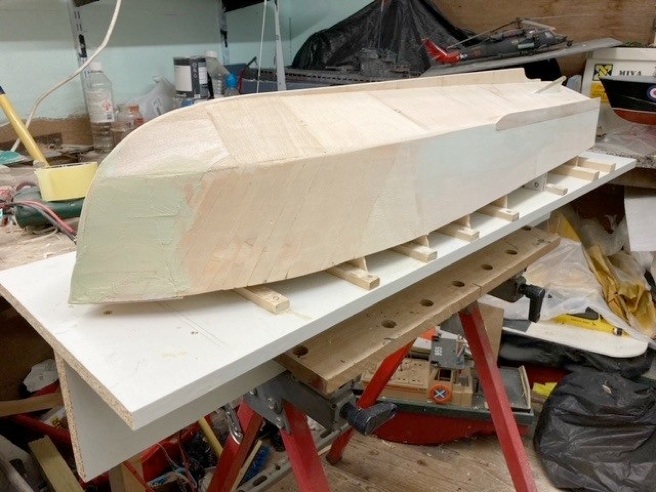
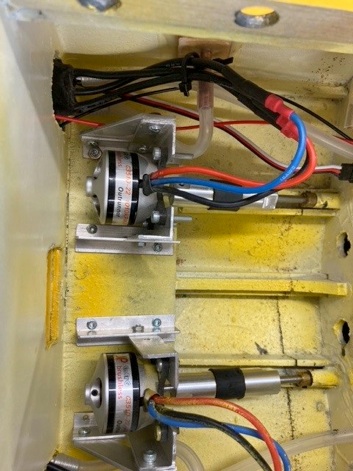
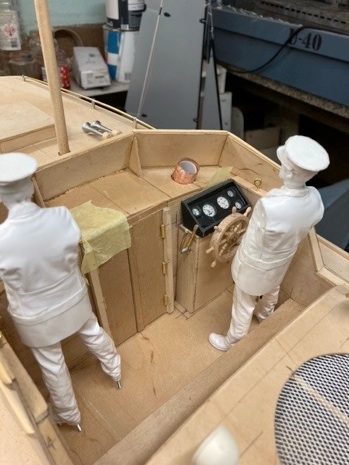
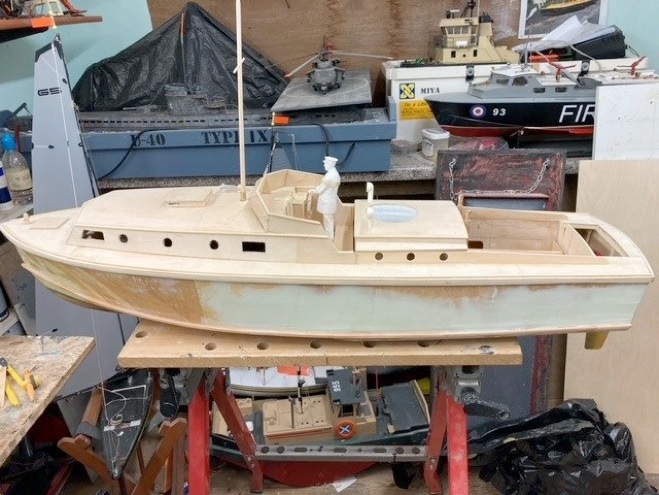
One major decision was whether the bridge area should be covered by a roof, or not. Versions of the real boat have been seen with either configuration. In this model, the bridge is not covered.

The model sits well on the water, and sails very well. The motors are sufficiently powerful to be able to get the hull planing, which looks just like the real boat under power.
Another model successfully completed.
